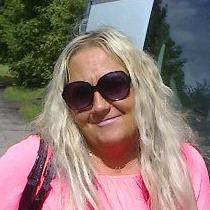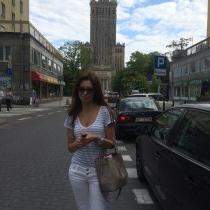
Polish Women. How Polish Girls Have Shaped Their Beautiful Country.







Polish women are at the forefront of modern change, balancing tradition with a strong sense of independence and ambition. Known for their intelligence, resilience, and cultural pride, Polish women are shaping their society in unique ways that often go beyond stereotypes.
Driven and EducatedPolish women place a high value on education and personal development. They represent a significant portion of university graduates, often pursuing studies in fields like engineering, medicine, and technology. These women are not only academically accomplished but also deeply interested in expanding their skills and knowledge, making them both intelligent and resourceful.
Nurturing and CaringPolish women are known for their caring nature, often extending warmth and support to their loved ones. Whether it’s preparing a home-cooked meal, offering a comforting presence during hard times, or simply checking in regularly, they place a lot of importance on nurturing relationships. They love being there for others and are happy to share their care—just make sure to show appreciation in return!
Family-CentricFamily holds a special place in the lives of Polish women. Relationships with parents and grandparents are strong, and they often enjoy spending time with family members, including frequent gatherings and phone calls. If you’re dating a Polish woman, you may notice that her family is an integral part of her life, and family values are something she respects deeply.
Elegant and Fashion-ConsciousPolish women take pride in their appearance and have a great sense of style. They often dress thoughtfully, whether heading to a casual outing or a formal event. Polish women appreciate looking polished and well-put-together, and you’ll rarely see them in anything less than stylish, tailored clothing—even for simple errands.
Calm and ComposedKnown for their level-headedness, Polish women often handle personal matters with grace and discretion. Instead of displaying strong emotions publicly, they may keep things private and resolve conflicts in a calm manner. This tendency towards composure and patience is a reflection of the balance and respect they strive for in their relationships.
Warm HostsPolish hospitality is renowned, and hosting guests is a point of pride for many Polish women. When invited to their homes, you can expect an abundant spread of food, drink, and heartfelt hospitality. Around the holidays, this becomes even more pronounced, with traditional meals and treats that reflect Poland’s rich culture. To make a good impression, be sure to savor each dish—Polish hosts love guests who appreciate their efforts!
Polish Women in Society and Politics
Throughout history, Polish women have taken on significant roles in politics, science, and social reform. Figures like Maria Skłodowska Curie, who discovered radium and polonium, have made groundbreaking contributions that continue to inspire. In modern times, Polish women actively participate in political and social movements, advocating for rights and reforms that shape the future of Poland.
Advocates for Women’s Rights
Polish women have long been involved in the fight for equality and personal rights. The 2016 “Czarny Protest” (Black Protest), for instance, saw thousands of women and men taking to the streets to stand up for reproductive rights. Polish women continue to advocate for their autonomy and are often at the forefront of feminist movements in Central and Eastern Europe.
Contributors to Art and Culture
Polish women have enriched the world of art, film, and literature. Director Agnieszka Holland has made a name for herself internationally, with films like Europa Europa and In Darkness, which have earned critical acclaim. Polish actresses, writers, and artists are celebrated for their creativity and have made substantial contributions to Poland’s cultural legacy.
Modern Women with Traditional Roots
While Polish women are ambitious and modern, many of them still embrace traditional values that respect family and heritage. This unique blend of independence and cultural pride makes them strong, resilient, and multifaceted individuals who are shaping Poland’s future in meaningful ways.
Polish Beauty and Elegance
The beauty of Polish women is often described as classic and refined. Known for their natural elegance, Polish women are admired for their poised presence and graceful style. From high-fashion events to casual streetwear, their sense of style is distinct, reflecting both modern trends and traditional influences. However, beyond outward beauty, Polish women are also valued for their inner strength and resilience.
Notable Polish Women in History
- Maria Skłodowska Curie – The Nobel Prize-winning scientist known for her work in radioactivity, Curie is celebrated worldwide for her groundbreaking achievements in physics and chemistry.
- Irena Sendler – A courageous woman who saved thousands of Jewish children during World War II, risking her life to ensure their safety.
- Krystyna Skarbek – A brave Polish spy who worked for the British SOE during WWII, Skarbek’s daring missions have made her a symbol of resilience and bravery.
Polish women continue to break barriers, challenge stereotypes, and build a future that honors both tradition and progress. Their dedication to education, culture, and social reform reflects the dynamic role they play in Polish society and the inspiration they offer to those around them.















